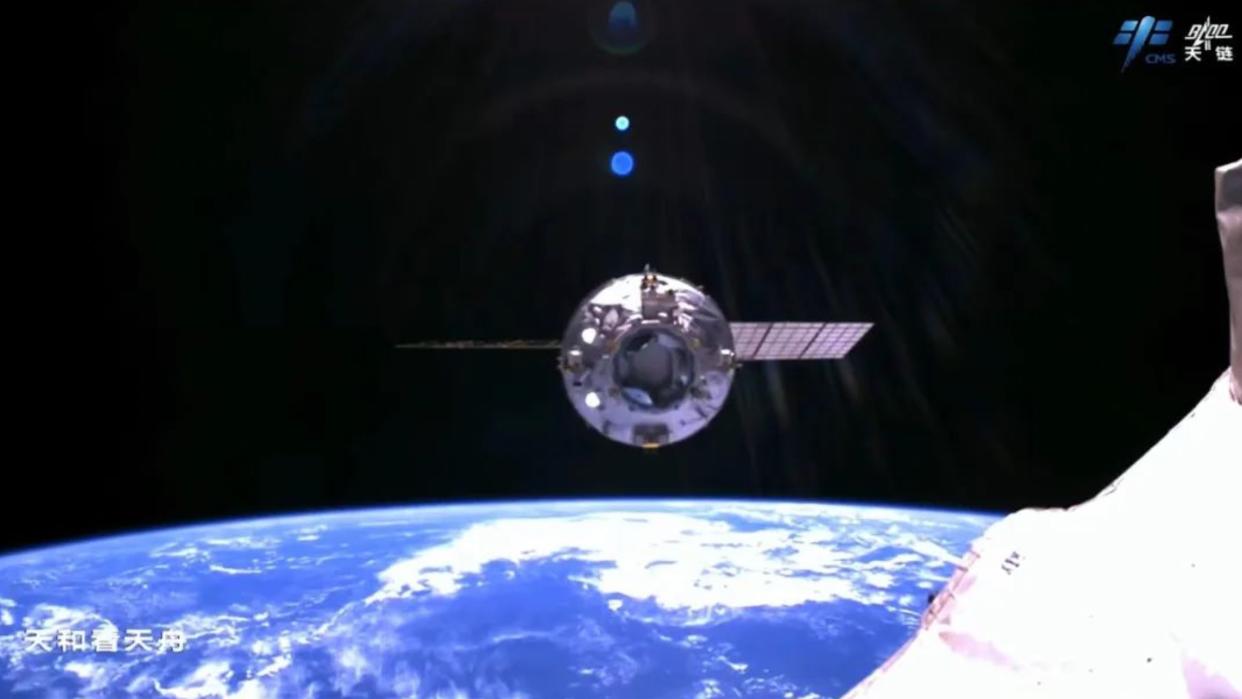China's Tianzhou 6 cargo spacecraft burns up in Earth's atmosphere

China deorbited its robotic Tianzhou 6 cargo spacecraft today (Jan. 19) after it completed its mission serving the country's space station.
The 35-foot-long (10.6 meters) Tianzhou 6 reentered over an area of ocean, likely the South Pacific — an area frequently used by countries for deorbiting spacecraft due to its remoteness — today at 7:37 a.m. EST (1237 GMT; 8:37 p.m. Beijing time), China's human spaceflight agency announced.
On Thursday (Jan. 18), Tianzhou 6 released Dalian-1, a small satellite developed by the Dalian University of Technology. The spacecraft has remote sensing capabilities and carries a solar sail, according to the university.
Related: China's space station, Tiangong: A complete guide
Tianzhou 6 launched atop a Long March 7 rocket on May 10, 2023, carrying supplies, propellant, experiments and other cargo to China's Tiangong space station.
It was the fifth cargo mission to Tiangong and the first involving the improved version of the Tianzhou freighter. This new vehicle can accommodate about 1,100 more pounds (500 kilograms) of payload than previous iterations of the spacecraft.
China launched its latest cargo supply mission, Tianzhou 7, on Wednesday (Jan. 17). Tianzhou 6 undocked from Tiangong a week earlier to make way for the arrival of the incoming Tianzhou 7 spacecraft.
RELATED STORIES:
— China launches Tianzhou 6 cargo ship to Tiangong space station
— China launches Tianzhou 7 cargo craft to Tiangong space station (video)
— The latest news about China's space program
Tianzhou 7 delivered supplies for the ongoing Shenzhou 17 crewed mission and more besides. This year, China will launch two crewed missions to Tiangong — Shenzhou 18 and 19 — and another Tianzhou supply mission, expected to fly around August.
China plans to launch Tianzhou spacecraft every eight months as part of plans to keep Tiangong constantly occupied for at least 10 years.

